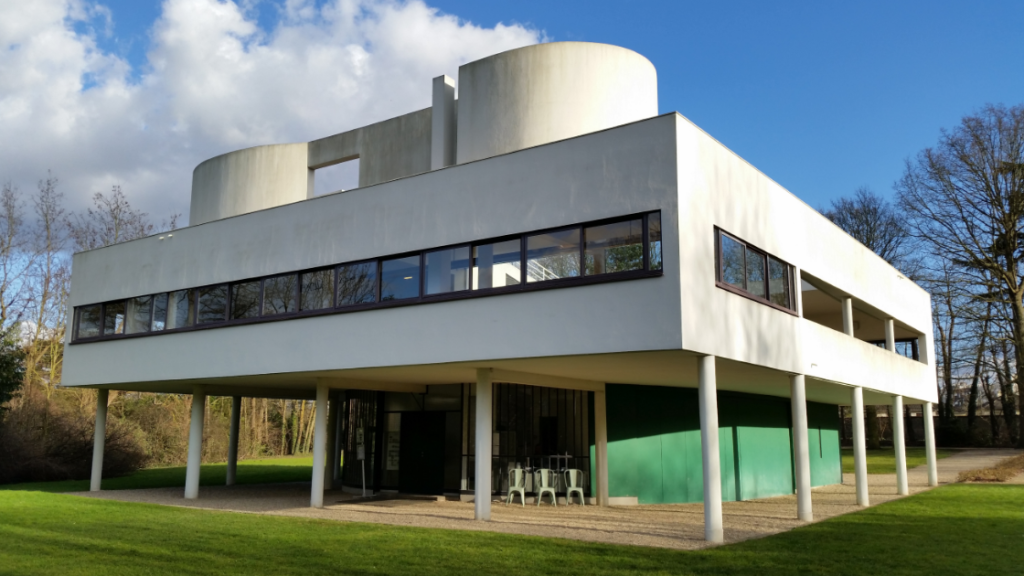Le Corbusier was a Swiss architect, designer, planner, and all around aesthetics powerhouse best known for pioneering Modernism in architecture. He built the above impractically beautiful building in 1927, yes that ‘vintage’ car in the photograph is in fact period correct. The construction of cars still following the aesthetic ques derived from the mass production manufacturing processes, it seems almost trapped in time. The home, which in the early early 20th century was experiencing a construction method renaissance powered partially by the new shapes and forms possible with reinforced concrete structures. These new materials empowered Le Corbusier to shape buildings with an aesthetic focus worshiping an idealism rarely seen in homes. Although stunning, and exuding a sense of scientific purity the design like his other flat roof constructions was a romantic one and almost tragically so as the story is told by Alain de Botton in his book The Architecture of Happiness:
“By Modernism’s own standards, the roof of the villa was equally, and yet more ruinously, dishonest. In spite of initial protest from the Savoyes, Le Corbusier insisted – supposedly on technical and economic grounds alone – that a flat roof would be preferable to a pitched one. It would, he assured his clients, be cheaper to construct, easier to maintain and cooler in the summer, and Madame Savoye would be able to do her gymnastic exercises on it without being bothered by damp vapours emanating from the ground floor. But only a week after the family moved in the
roof sprang a leak over Roger’s bedroom, letting in so much water that the boy contracted a chest infection, which turned into pneumonia, which eventually required him to spend a year recuperating in a sanatorium in Chamonix…
..Madame Savoye compressed her feelings about theperformance of the flat roof into a (rain splattered letter: ‘It’s raining in the hall, it’s raining on the ramp, and the wall of the garage is absolutely soaked. What’s more, it’s still raining in my bathroom which floods in bad weather, as the water comes in through the skylight.'”
What did Le Corbusier have to say about it? He felt the water was a minor perturbance considering the critical acclaim their house was receiving. Rather than be bothered by the criticism of those who commissioned his work he seemed more interested in those who would remember it, and in many ways this is the designers existential challenge.
“You should place a book on the table in the downstairs hall and ask all your visitors to inscribe their names and address in it. You’ll see how many fine autographs you will collect” Le Corbusier

